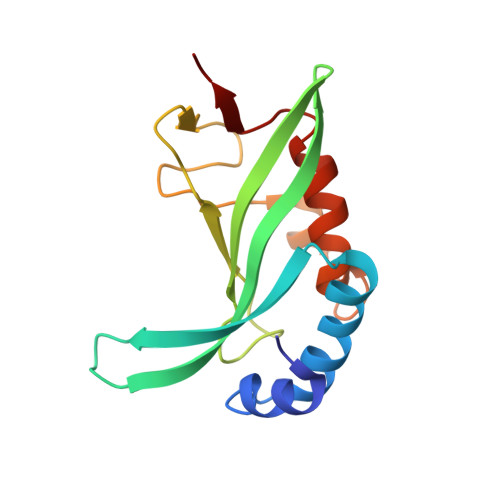Tsg101 chaperone function revealed by HIV-1 assembly inhibitors.
Strickland, M., Ehrlich, L.S., Watanabe, S., Khan, M., Strub, M.P., Luan, C.H., Powell, M.D., Leis, J., Tjandra, N., Carter, C.A.(2017) Nat Commun 8: 1391-1391
- PubMed: 29123089
- DOI: https://doi.org/10.1038/s41467-017-01426-2
- Primary Citation of Related Structures:
5VKG - PubMed Abstract:
HIV-1 replication requires Tsg101, a component of cellular endosomal sorting complex required for transport (ESCRT) machinery. Tsg101 possesses an ubiquitin (Ub) E2 variant (UEV) domain with a pocket that can bind PT/SAP motifs and another pocket that can bind Ub. The PTAP motif in the viral structural precursor polyprotein, Gag, allows the recruitment of Tsg101 and other ESCRTs to virus assembly sites where they mediate budding. It is not known how or even whether the UEV Ub binding function contributes to virus production. Here, we report that disruption of UEV Ub binding by commonly used drugs arrests assembly at an early step distinct from the late stage involving PTAP binding disruption. NMR reveals that the drugs form a covalent adduct near the Ub-binding pocket leading to the disruption of Ub, but not PTAP binding. We conclude that the Ub-binding pocket has a chaperone function involved in bud initiation.
Organizational Affiliation:
Laboratory of Molecular Biophysics, Biochemistry and Biophysics Center, National Heart, Lung and Blood Institute, National Institutes of Health, Bethesda, MD, 20892, USA.















